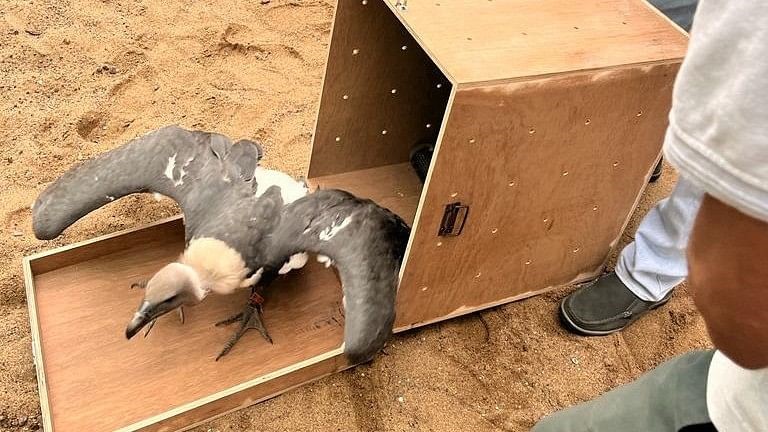Description

Disclaimer: Copyright infringement not intended.
Context
- A total of 20 vultures were brought to MadhyaPradesh from Vulture Conservation Centre in Kerwa from Pinjore in Haryana on June 24, 2023.
- It included five males, five females and 10 sub adult vultures.
- The initiative is expected to improve the population of species in the state.
Background
- In MadhyaPradesh, white-rumped vultures were in abundance during 1990s.
- However their population declined by 90% by 2005-06.
- The main culprit was the exposure to diclofenac, which was extensively used for treatment of cattle.

White rumped Vulture
- It is also known as Gyps Bengalensis, and is one of the 9 species of Indian vulture which are identified for protection.
- They are medium in size and called white humped due to presence of white patch of feathers on the lower back and upper tail.
Habitat and distribution
- They are generally found in Indian subcontinent and the regions of south east Asia such as Thailand, Laos.
- They are more commonly found in the Indus valley and along the Himalayas to Assam valley.
- They are found in variety of landscapes including hilly regions and Plains near human settlements.
Conservation Status
- They are categorized as critically endangered species as per IUCN.
- They are listed under schedule I of the Wildlife (Protection) Act 1972.
Threat
- Prime reason for decline - Use of non-steroidal anti-inflammatory drugs for cattle treatment – for eg
- Habitat degradation and fragmentation.
- Loss of foraging range.
- Reduced availability of
- Instances of electrocutions due to encounter with power lines.
Measures Taken
- Mass education and awareness programme are being undertaken for sensitizing about their significance.
- Involvement of local communities to report injured vulture to authorities.
- In 2006, Project Vulture was launched by Government of India in an effort to save vultures.
- Also various Vulture Captive Care facility and Vulture care centres have been established.
- There is a prohibition on manufacture of Diclofenac for animal use.
- A National Action Plan (2006) on Vulture Conservation has been formulated.
Benefits to human and Environment
- Regulation of stray dog population.
- They are known to be scavengers who, by eating the dead carcass -
- Keep a check on the spread of disease like rabies, anthrax.
- Help in avoiding the risk of water contamination.
- They keep the environment clean.
- They help in sustainability of customs such as Towers of Silence.
|
Tower of Silence
It is a traditional custom/practice of the Parsis. After death of a person they place the dead in the structure called ‘Towers of Silence’. Vultures can feed upon the body.
|

Must Read Article:
https://www.iasgyan.in/daily-current-affairs/vultures-in-india
|
PRACTICE QUESTION
Vultures help in keeping environment clean. Their declining population can pose a risk to human health. Discuss in context of White humped vulture. Also mention the initiatives taken by government to conserve the population of vultures. (250 words)
|
https://www.freepressjournal.in/bhopal/bhopal-20-white-rumped-vultures-brought-from-haryana












